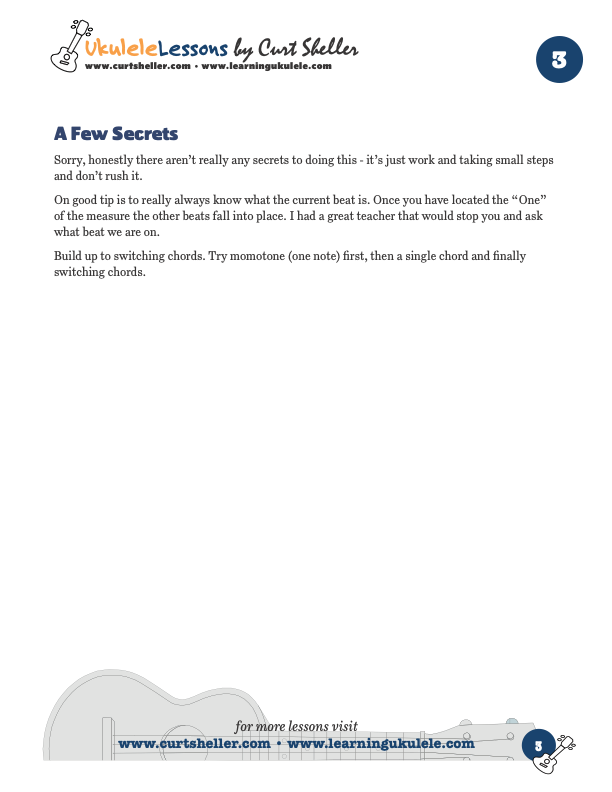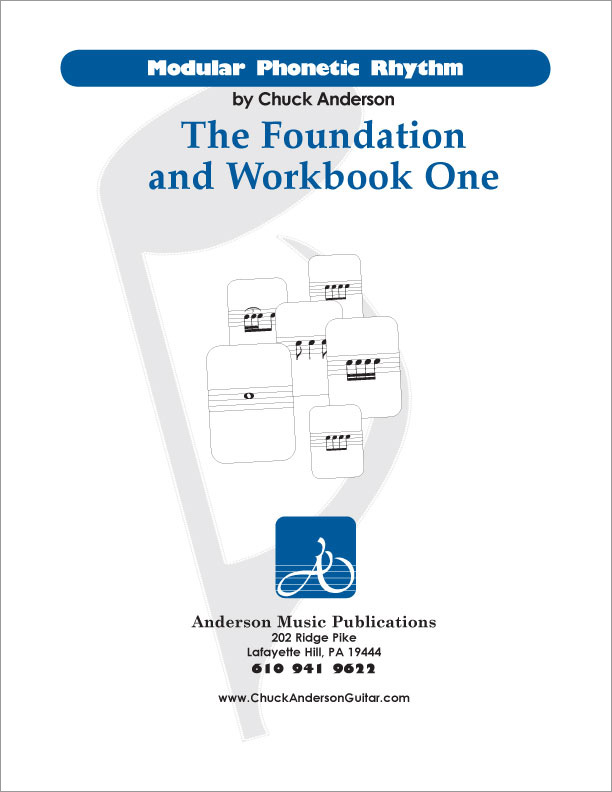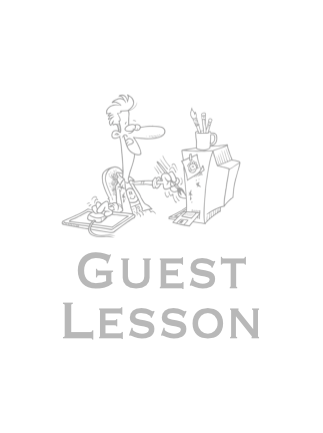Playing in time is an essential skill that every musician must possess. There are no shortcuts or alternatives when it comes to this aspect of music. Keeping your place while playing is a crucial lesson that focuses on honing your ability to maintain a consistent tempo and rhythm throughout your performance.








Playing in time is an essential skill that every musician must possess. There are no shortcuts or alternatives when it comes to this aspect of music. Keeping your place while playing is a crucial lesson that focuses on honing your ability to maintain a consistent tempo and rhythm throughout your performance.
Available for Premium Site Access Plans Only
“A metronome is an external time device for developing and synchronizing your accurate, internal time.” — Curt Sheller
The ability to maintain a steady tempo and rhythm while performing is essential for musical coherence and synchronicity. It ensures that all musicians involved in a piece stay in sync with each other, creating a unified and harmonious sound. Whether playing solo or as part of an ensemble, keeping your place is vital to maintain the structure and integrity of the music.
Practicing and honing this skill involves a keen sense of timing, concentration, and a deep understanding of the musical composition. It requires musicians to internalize the pulse and rhythmic patterns of the music, allowing them to navigate through various sections and transitions seamlessly.
By consistently working on "Keeping Your Place," musicians develop a heightened sense of awareness and control over their playing. It enhances their musicality and allows them to adapt and respond effectively to changes within the music. Ultimately, playing in time and maintaining one's place contributes significantly to the overall quality and impact of a musical performance.
Playing in time is an essential skill that every musician must possess. There are no shortcuts or alternatives when it comes to this aspect of music. Keeping your place while playing is a crucial lesson that focuses on honing your ability to maintain a consistent tempo and rhythm throughout your performance.
Available for Premium Site Access Plans Only
“A metronome is an external time device for developing and synchronizing your accurate, internal time.” — Curt Sheller
The ability to maintain a steady tempo and rhythm while performing is essential for musical coherence and synchronicity. It ensures that all musicians involved in a piece stay in sync with each other, creating a unified and harmonious sound. Whether playing solo or as part of an ensemble, keeping your place is vital to maintain the structure and integrity of the music.
Practicing and honing this skill involves a keen sense of timing, concentration, and a deep understanding of the musical composition. It requires musicians to internalize the pulse and rhythmic patterns of the music, allowing them to navigate through various sections and transitions seamlessly.
By consistently working on "Keeping Your Place," musicians develop a heightened sense of awareness and control over their playing. It enhances their musicality and allows them to adapt and respond effectively to changes within the music. Ultimately, playing in time and maintaining one's place contributes significantly to the overall quality and impact of a musical performance.
Playing in Time
Here are some definitions of common music terms regarding playing in time:
Beat
Beat — In music, the "beat" refers to the underlying pulse or rhythm that serves as the foundation for a piece of music. It is the regular, recurring pattern of strong and weak accents that provides a sense of timing and structure to the music. The beat serves as a reference point for musicians and listeners alike, helping to establish the tempo and guide the performance. It is often counted or felt in terms of measures or bars, dividing the music into equal segments and providing a sense of continuity and cohesion.
Tempo
Tempo — In music, "tempo" refers to the speed or pace at which a piece of music is performed. It determines how fast or slow the music feels. Tempo is typically indicated at the beginning of a musical score with an Italian word or a metronome marking. For example, terms like "Allegro" (fast), "Moderato" (moderate), "Andante" (walking pace), or "Largo" (slow) are used to communicate the desired tempo to the musician.
Tempo is an essential element in music as it helps establish the mood, energy, and overall feel of a composition. It also provides a sense of coherence and coordination among the performers when playing together. While tempo is often indicated by a specific term, it can also be measured precisely using a metronome, which provides a precise beats per minute (BPM) marking.
Meter
In music, "meter" refers to the organization of rhythmic patterns into regular groupings of beats. It establishes a recurring pattern of strong and weak beats, creating a sense of musical structure and providing a framework for the rhythm. Meter is typically indicated by a time signature at the beginning of a musical composition.
The time signature consists of two numbers stacked vertically, such as 4/4 or 3/4. The top number represents the number of beats in each measure or bar, while the bottom number indicates the note value that receives one beat. For example, in 4/4 time, there are four beats in each measure, and the quarter note receives one beat. This is the most common time signature in popular music.
Meter helps musicians and listeners understand the rhythmic feel of a piece and how to interpret and count its beats. It establishes a sense of regularity and pulse, enabling musicians to synchronize their playing and maintain a consistent rhythm throughout the composition.
Pulse
In music, "pulse" refers to the underlying steady and consistent beat or rhythmic feel that serves as a foundation for the music. It is the regular and perceptible recurrence of accents or beats that creates a sense of timing and forward motion. The pulse provides a consistent reference point for musicians and listeners, allowing them to feel the rhythm and coordinate their actions accordingly.
The pulse can be thought of as the heartbeat or core rhythmic element that drives the music forward. It establishes the tempo and helps maintain a sense of cohesion and unity within a piece of music. The pulse can be felt or interpreted in various ways depending on the style and genre of music, but its presence is fundamental to maintaining a consistent rhythm and groove throughout a musical performance.
Rhythm
In music, "rhythm" refers to the pattern of durations and accents that give music its distinctive flow and groove. It is the organization of sounds and silences in time, creating a sense of movement, energy, and musical structure. Rhythm is a fundamental element of music and encompasses various components, including beats, meter, note durations, rests, and patterns of accents.
Rhythm involves the arrangement of different note durations, such as whole notes, half notes, quarter notes, eighth notes, and so on, within a musical composition. These note durations, combined with rests (periods of silence), create a rhythmic pattern. The rhythm can be simple or complex, depending on the arrangement and interaction of these elements.
Rhythm gives music its sense of groove and drive. It affects how the music feels and moves, influencing the listener's emotional and physical response. It is the rhythmic interplay between melody, harmony, and various instruments or voices that creates the overall rhythmic texture of a piece.
Rhythm is typically notated using musical notation, with symbols and markings indicating the duration and timing of the notes and rests. However, rhythm can also be felt, internalized, and expressed through body movement, such as tapping one's foot or clapping hands, allowing musicians to connect with the pulse and flow of the music.
As you can see there is a bit of overlap in the describing the various terms in music when it coems to some of the above terms.
Using a Metronome to Learn to Play in Time
A basic use of a metronome is external tracking of the beat and tempo with audible clicks, beeps, or a light. It is great for learning and practicing new music. Set the metronome to the goal tempo for the music you are working on. If not successful, set the metronome to a tempo that you can play the music at. With every successful performance, increase, the metronome until you are at the goal tempo.
- Set the metronome to the tempo you want to achieve for the music you're practicing.
- If you find it difficult to keep up, don't fret (no pun intended). Lower the metronome's tempo to a speed at which you can comfortably play the music.
- Practice playing the music at the adjusted tempo, making sure to stay in sync with the metronome. As you improve and consistently play in time, gradually increase the metronome's tempo.
- With each successful performance, keep bumping up the metronome's tempo little by little, 4 or 5 bpm or click each time, until you reach your original goal tempo.
By using this step-by-step method with a metronome, you'll gradually enhance your ability to play in time, ensuring your performances are precise and steady. Playing in time is the responsibility of ALL musicians and not one particular musician.
Often it's a simple as counting. I tell all my students, I can't tell if you if your counting — only is you should have been counting.
Metronomes
Get yourself a metronome, an external source for helping your develop a internal sense of time and rhythm.
Web Sites & Apps
Here are few places to find a metronome online. Every app store has multiple metronomes available for download to your computer, tablets or phone.
- guitarapp.com • This is the online metronome that I'm using right here. Also an iOS app for: Lessons | Tuner | Metronome | Chords
A Few Other Metronome Resources
- flutetunes.com Metronome • This online metronome allows you to set the tempo using the common tempo terms such as: Presto, Allegro, Andante, Largo, etc.
- Musica Metronome • A very simple metronome right in a browser. Musicca is a most popular music learning platforms, with several million monthly users in more than 150 countries. Based in Denmark, but our team comprises people from around the world.
- Google Metronome • A very simple metronome right in a browser.
- Metronome • A GNOME (Linux ) Flatpak app .
Your fellow ukulele players and musicians will NOT know you are using a metronome–ONLY if you should have be using a metronome.
— Curt Sheller
- Howard Levy: How to Keep Time with Your Body • This is a great, great lesson from Harmonica virtuoso Howard Levy that is appropriate for ANY musician and instrument. Be sure to checkout levyland.com for a lot of great lessons for harmonica.
Related Lessons, Videos, Lesson Series, Songs, Books & Reference Charts, Resources & Assets, Workshops are below.

Modular Phonetic Rhythm represents a significant advance in the teaching and application of rhythm. Eliminating many inefficient aspects of rhythm education, Modular Phonetic Rhythm streamlines the traditional educational approach, resulting in a reflexive reaction to rhythm.


return in your investment)—it is this— learning the
f*ckingnotes of your OWN instrument. Sorry for the tough talks—but it is sooooo true!


Learn to read single note melodies in the first/open position is a lot easier than you might think. Book: Ukulele – Reading Music Series – Primer

An organized collection of daily practice and reference material for the contemporary ukulele player for developing the vocabulary and knowledge necessary for single note playing. Book: Daily Practice Material for the Contemporary Ukulele
Checkout the Books & Reference Charts for additional Handy, Dandy Reference Charts.

Ukulele Fingerboard Chart for C Tuning, Low or High G – G C E A

Ukulele Fingerboard Chart for G Tuning, Low or High A – D G B E

A handy reference chart of all 15 major and relative minor key signatures. US Letter 8.5 x 11 sized (ANSI-A) , A4







.jpg)